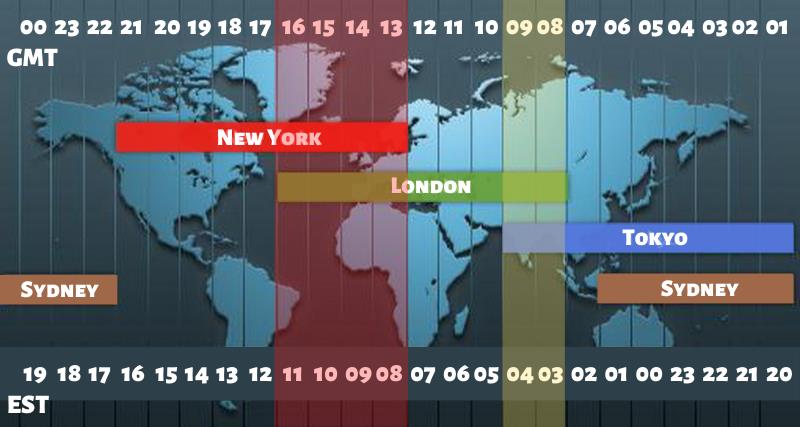
Before you can learn how to read forex charts, it is important that you understand the basic concepts behind these instruments. Forex charts indicate the exchange rates between two currencies. These charts show the open, high and low prices as well as close prices. Knowing the relationship between currencies can help you decide when to sell or buy. You can see this information on a foreign currency chart. You need to be aware of several things before you can begin reading forex charts. We will go over each one in detail.
Candlestick chart
One of the most common errors traders make when trying to read forex charts is to use the Candlestick chart. Candlestick patterns have a reason behind them. If there is a bullish line visible, it means that buyers are in charge. Thus, the price is likely will move higher. The opposite will be true if there is a small bearish line. This is because a bullish indicator means that sellers are in control. A bearish bar on the other hand indicates that sellers want to lower the price.

Line chart
A line forex charts presents the same data and information as a candlestick, except that the lines connect different close prices. While these charts provide a simple view of the price movement, they do not provide as much detail as candlestick charts. The details of price changes can't be seen in a line chart, but it is useful to know how to interpret them. Here are some tips.
Point-and figure chart
Before you can draw a Point and Figure Forex chart, you need to first choose the timeframe and box size. You can plot X or O whenever a price moves more than 100 pips. The time frame can also be based on a day's high or low. There are many types Point-and-Figure charts. Here are some of the most commonly used types.
SMA
SMAs (moving averages) are an indicator that smooths out daily price fluctuations. They are frequently used to confirm changes in trend. A rising SMA can indicate an uptrend, while a falling SMA could indicate a decline. Analysts also link the trend's close price. In this case, a price close below the SMA is a bearish signal. The SMA's duration is up to the trader and the trading style.

Bollinger bands
If you're wondering how to read Bollinger bands on your forex charts, then you've come to the right place. This indicator gives traders unique insight into volatility and price. This indicator is great for both trend-following, and determining the entry or exit point to trade. You should be cautious with it as it can lead to confusion. This simple method will help you to understand Bollinger Bands on Forex charts.
FAQ
What is security in the stock market?
Security is an asset that produces income for its owner. Shares in companies are the most popular type of security.
There are many types of securities that a company can issue, such as common stocks, preferred stocks and bonds.
The earnings per shares (EPS) or dividends paid by a company affect the value of a stock.
Shares are a way to own a portion of the business and claim future profits. You will receive money from the business if it pays dividends.
You can sell your shares at any time.
What is an REIT?
A real estate investment Trust (REIT), or real estate trust, is an entity which owns income-producing property such as office buildings, shopping centres, offices buildings, hotels and industrial parks. They are publicly traded companies that pay dividends to shareholders instead of paying corporate taxes.
They are similar to a corporation, except that they only own property rather than manufacturing goods.
Why are marketable securities important?
An investment company exists to generate income for investors. It does this through investing its assets in various financial instruments such bonds, stocks, and other securities. These securities are attractive because they have certain attributes that make them appealing to investors. They are considered safe because they are backed 100% by the issuer's faith and credit, they pay dividends or interest, offer growth potential, or they have tax advantages.
A security's "marketability" is its most important attribute. This is how easy the security can trade on the stock exchange. Securities that are not marketable cannot be bought and sold freely but must be acquired through a broker who charges a commission for doing so.
Marketable securities are government and corporate bonds, preferred stock, common stocks and convertible debentures.
These securities are a source of higher profits for investment companies than shares or equities.
How Share Prices Are Set?
Investors set the share price because they want to earn a return on their investment. They want to make money from the company. They buy shares at a fixed price. The investor will make more profit if shares go up. Investors lose money if the share price drops.
An investor's primary goal is to make money. This is why investors invest in businesses. They are able to make lots of cash.
Why is a stock called security?
Security is an investment instrument whose value depends on another company. It could be issued by a corporation, government, or other entity (e.g. prefer stocks). The issuer promises to pay dividends and repay debt obligations to creditors. Investors may also be entitled to capital return if the value of the underlying asset falls.
What is the difference?
Brokers are people who specialize in helping individuals and businesses buy and sell stocks and other forms of securities. They handle all paperwork.
Financial advisors are experts in the field of personal finances. They use their expertise to help clients plan for retirement, prepare for emergencies, and achieve financial goals.
Financial advisors can be employed by banks, financial companies, and other institutions. Or they may work independently as fee-only professionals.
If you want to start a career in the financial services industry, you should consider taking classes in finance, accounting, and marketing. You'll also need to know about the different types of investments available.
What are some advantages of owning stocks?
Stocks are less volatile than bonds. Stocks will lose a lot of value if a company goes bankrupt.
If a company grows, the share price will go up.
For capital raising, companies will often issue new shares. Investors can then purchase more shares of the company.
To borrow money, companies can use debt finance. This allows them to borrow money cheaply, which allows them more growth.
People will purchase a product that is good if it's a quality product. The stock price rises as the demand for it increases.
The stock price will continue to rise as long that the company continues to make products that people like.
Statistics
- For instance, an individual or entity that owns 100,000 shares of a company with one million outstanding shares would have a 10% ownership stake. (investopedia.com)
- "If all of your money's in one stock, you could potentially lose 50% of it overnight," Moore says. (nerdwallet.com)
- Individuals with very limited financial experience are either terrified by horror stories of average investors losing 50% of their portfolio value or are beguiled by "hot tips" that bear the promise of huge rewards but seldom pay off. (investopedia.com)
- Our focus on Main Street investors reflects the fact that American households own $38 trillion worth of equities, more than 59 percent of the U.S. equity market either directly or indirectly through mutual funds, retirement accounts, and other investments. (sec.gov)
External Links
How To
How to make a trading plan
A trading plan helps you manage your money effectively. It allows you to understand how much money you have available and what your goals are.
Before you start a trading strategy, think about what you are trying to accomplish. You may wish to save money, earn interest, or spend less. You might want to invest your money in shares and bonds if it's saving you money. If you're earning interest, you could put some into a savings account or buy a house. Maybe you'd rather spend less and go on holiday, or buy something nice.
Once you know what you want to do with your money, you'll need to work out how much you have to start with. It depends on where you live, and whether or not you have debts. Consider how much income you have each month or week. Your income is the amount you earn after taxes.
Next, you'll need to save enough money to cover your expenses. These expenses include bills, rent and food as well as travel costs. All these things add up to your total monthly expenditure.
Finally, you'll need to figure out how much you have left over at the end of the month. This is your net disposable income.
Now you've got everything you need to work out how to use your money most efficiently.
Download one from the internet and you can get started with a simple trading plan. Ask someone with experience in investing for help.
Here's an example spreadsheet that you can open with Microsoft Excel.
This displays all your income and expenditures up to now. Notice that it includes your current bank balance and investment portfolio.
And here's a second example. This was created by a financial advisor.
It will let you know how to calculate how much risk to take.
Remember: don't try to predict the future. Instead, be focused on today's money management.